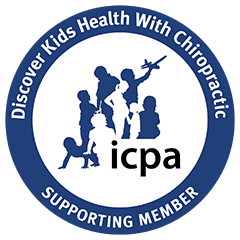What is Tummy Time?
Each parent visits with their pediatrician (or their google doctor!) to know the milestones that their child should be hitting. Whether it be following a sound, holding their head up, or rolling over. Tummy time is an important tool to use to help the proper development of their child’s brain and body.
The Importance of Tummy Time
Tummy time is more than 20 minutes of listening to a child scream while being in a position that they don’t like. Infants benefit tremendously from spending time on their stomachs. It gives their neck a workout and it also strengthens their trunk and core. Plus it also encourages them to look around and grab for objects. Research has found that more tummy time leads to improved motor skills. This improvement in motor skills also stimulates other areas of the brain-healthy brain = healthy body.
Helping with Tummy Time
It is important to remember that infants do not typically respond well to sudden changes. So you want to make sure you ease your child into tummy time. Start with them on the floor on their back and engage with them so they begin to understand that floor time is normal. Next, gently roll them to their tummy. Once they are on their tummy get down on the floor face-to-face with them and talk to them. You can place a few toys within reach to encourage the baby to lift its head.
You want to avoid too much padding to make sure your baby can move. Remember that kicking, grunting or making other noises is normal as they are using effort. If they start crying in frustration move them into a familiar position until they calm and then try again.
Understanding STNR and ATNR
Tummy time and crawling encourage the development of 2 important reflexes: Symmetrical Tonic Neck Reflex (STNR) and Asymmetrical Tonic Neck Reflex (ATNR).
STNR is also known as the crawling reflex. This helps babies change from being on their belly to on their hands and knees. Through lots of crawling this reflex should disappear at about 1 year. If it doesn’t, it may contribute to challenges with posture, balance and hand-eye coordination.
ATNR should disappear around 6 months. This reflex is what causes a baby’s arm and leg to stretch in the direction they are looking at. This helps baby develop the ability to push themselves off the floor with their hands and turn their head with more neck control.
Benefits of Crawling
Crawling plays an important role in an infant’s early development. It has been found to help with strengthening the trunk, improving balance and spinal alignment, enhancing visual-spatial skills, improving socio=emotional development, and it may help avoid future learning problems.
Crawling focuses on:
- Developing the muscles and joints near the center of the body (the tummy, back, neck, hips and shoulders).
- Advancing the bilateral coordination by creating connections between both cerebral hemispheres.
- Improving the physical benefits such as development of the arches of the hand, lengthening of the finger muscles, stabilizing the side of the hand, development of the muscles of the hand.
- Visual system development as your baby needs to focus on objects and track you during tummy time.
- Improving the vestibular system which helps with balance and spatial orientation.
The Chiropractic Factor
Chiropractors recognize the importance of the nervous system and how the body functions. Ask Dr. Elyssa to perform an evaluation of your child and for recommendations of how to make tummy time easy and fun for you and your child. Dr. Elyssa is available to help ensure that your child reaches each and every developmental milestone.
To learn more about tummy time read the full newsletter here.



